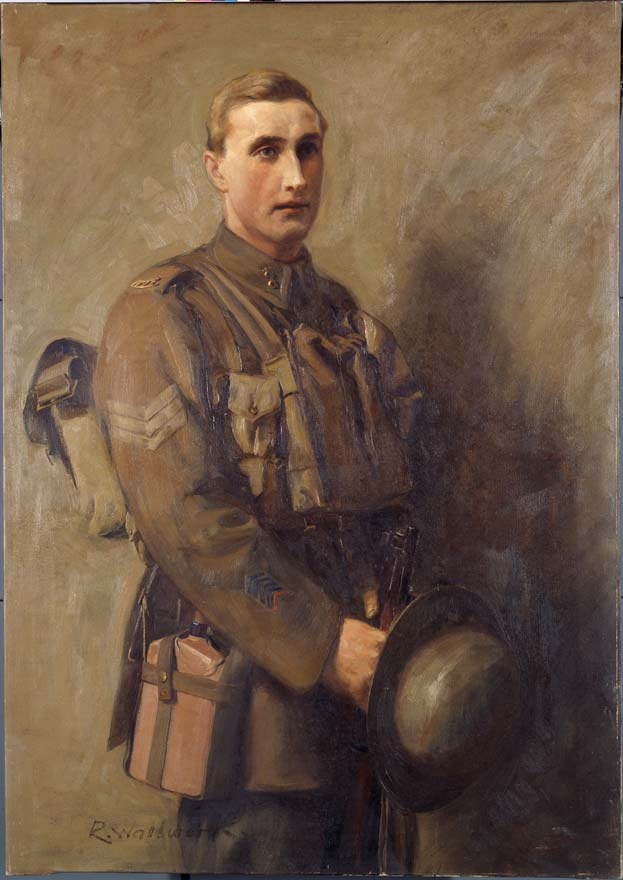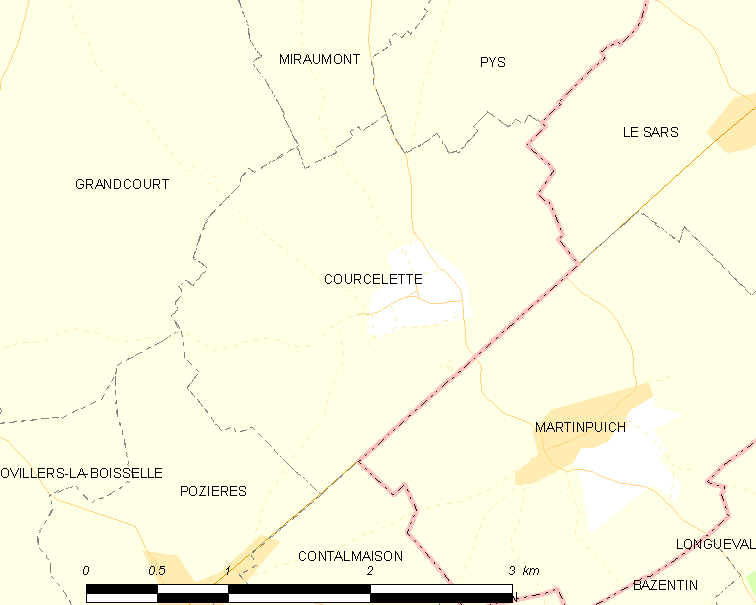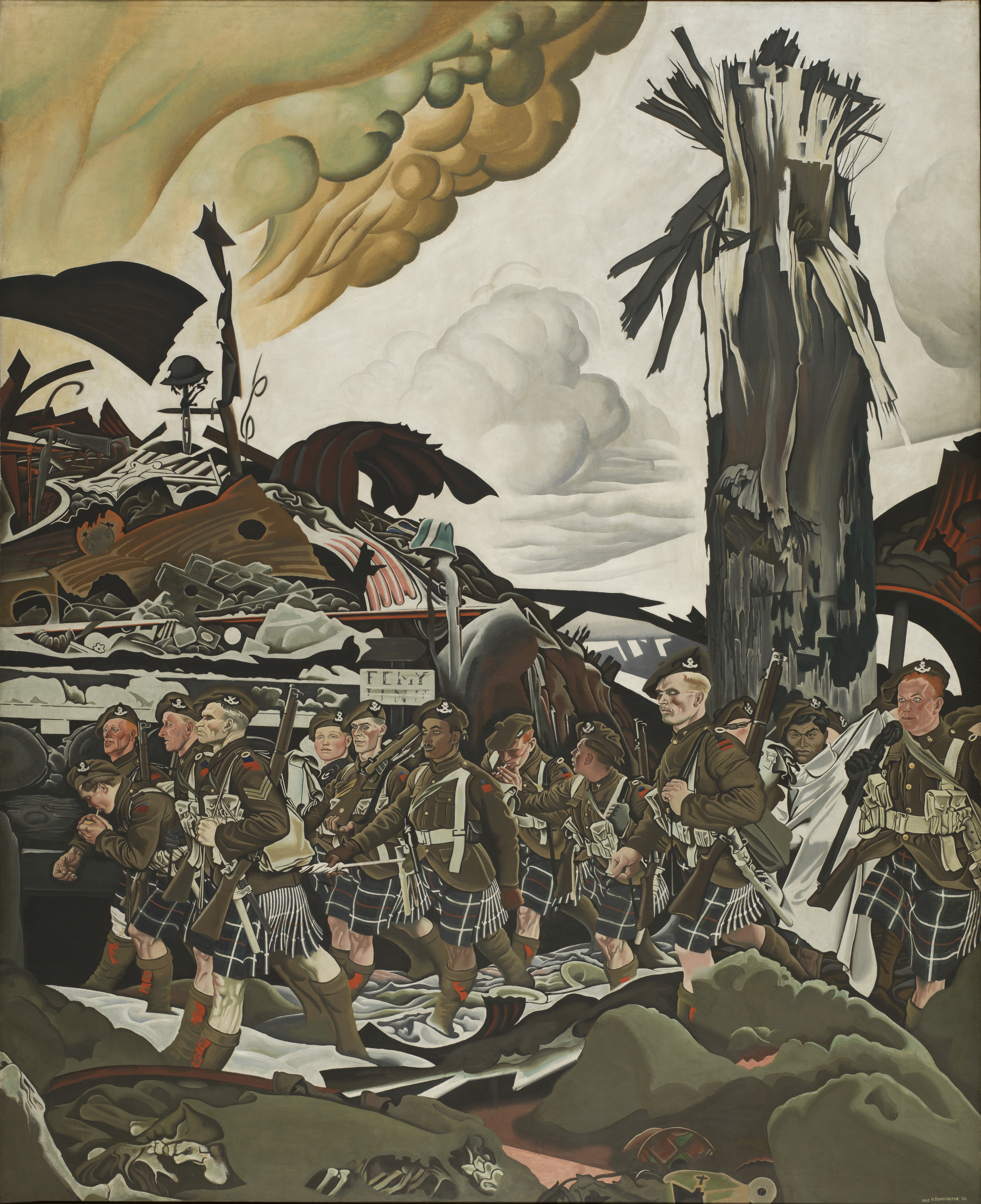|
Adanac Military Cemetery
Adanac Military Cemetery is a Commonwealth War Graves Commission burial ground for the dead of World War I located near the French villages of Miraumont, Pys and Courcelette and contains 3,187 interments, 1483 of whom are identified. The cemetery was formed after the war ended from the consolidation of existing burial sites into a 'concentration cemetery' by consolidating several smaller cemeteries onto the site. The name 'Adanac' is a reversal of word Canada, the home of over five hundred of the men interred there. The name was necessary because a cemetery near Cambrai that had been established during the war in October 1918 had already received the name "Canada Cemetery".https://www.cwgc.org/visit-us/find-cemeteries-memorials/cemetery-details/59000/Canada%20Cemetery,%20TILLOY-LEZ-CAMBRAI/ History The cemetery sits on land that was wrested from the Germans by the Canadian Corps in October and November 1916 during the final phases of the Battles of the Somme. Most of the m ... [...More Info...] [...Related Items...] OR: [Wikipedia] [Google] [Baidu] |
Commonwealth War Graves Commission
The Commonwealth War Graves Commission (CWGC) is an intergovernmental organisation of six independent member states whose principal function is to mark, record and maintain the graves and places of commemoration of Commonwealth of Nations military service members who died in the two World Wars. The commission is also responsible for commemorating Commonwealth civilians who died as a result of enemy action during the Second World War. The commission was founded by Fabian Ware, Sir Fabian Ware and constituted through Royal Charter in 1917 as the Imperial War Graves Commission. The change to the present name took place in 1960. The commission, as part of its mandate, is responsible for commemorating all Commonwealth war dead individually and equally. To this end, the war dead are commemorated by a name on a headstone, at an identified site of a burial, or on a memorial. War dead are commemorated uniformly and equally, irrespective of military or civil rank, race or creed. The co ... [...More Info...] [...Related Items...] OR: [Wikipedia] [Google] [Baidu] |
Samuel Forsyth
Samuel Forsyth, Victoria Cross, VC (3 April 1892 – 24 August 1918) was a New Zealand recipient of the Victoria Cross (VC), the highest award for gallantry in the face of the enemy that could be awarded at the time to British and Commonwealth of Nations, Commonwealth forces. Born in 1892, Forsyth enlisted with the New Zealand Expeditionary Force shortly after the outbreak of the First World War in the summer of 1914. Serving with the New Zealand Engineers as a sapper, he participated in the Gallipoli Campaign and later fought on the Western Front (World War I), Western Front. By August 1918, he was on probation to become a Officer (armed forces), commissioned officer and was temporarily attached to an infantry battalion. On 24 August 1918, during the Second Battle of Bapaume, he played a key role in eliminating a machine gun nest that was holding up the advance of his battalion, but was then killed by a sniper. For this action, he was posthumously awarded the VC. Early life Sa ... [...More Info...] [...Related Items...] OR: [Wikipedia] [Google] [Baidu] |
World War I Cemeteries In France
In its most general sense, the term "world" refers to the totality of entities, to the whole of reality or to everything that is. The nature of the world has been conceptualized differently in different fields. Some conceptions see the world as unique while others talk of a "plurality of worlds". Some treat the world as #Monism and pluralism, one simple object while others analyze the world as a complex made up of many parts. In ''#Scientific cosmology, scientific cosmology'' the world or universe is commonly defined as "[t]he totality of all space and time; all that is, has been, and will be". ''#Theories of modality, Theories of modality'', on the other hand, talk of possible worlds as complete and consistent ways how things could have been. ''#Phenomenology, Phenomenology'', starting from the horizon of co-given objects present in the periphery of every experience, defines the world as the biggest horizon or the "horizon of all horizons". In ''#Philosophy of mind, philosop ... [...More Info...] [...Related Items...] OR: [Wikipedia] [Google] [Baidu] |
Commonwealth War Graves Commission Cemeteries In France
A commonwealth is a traditional English term for a political community founded for the common good. Historically, it has been synonymous with " republic". The noun "commonwealth", meaning "public welfare, general good or advantage", dates from the 15th century. Originally a phrase (the common-wealth or the common wealth – echoed in the modern synonym "public wealth"), it comes from the old meaning of "wealth", which is "well-being", and is itself a loose translation of the Latin res publica (republic). The term literally meant "common well-being". In the 17th century, the definition of "commonwealth" expanded from its original sense of "public welfare" or "commonweal" to mean "a state in which the supreme power is vested in the people; a republic or democratic state". The term evolved to become a title to a number of political entities. Three countries – Australia, the Bahamas, and Dominica – have the official title "Commonwealth", as do four U.S. states and two U.S. terr ... [...More Info...] [...Related Items...] OR: [Wikipedia] [Google] [Baidu] |
Canadian Military Memorials And Cemeteries
Canadians (french: Canadiens) are people identified with the country of Canada. This connection may be residential, legal, historical or cultural. For most Canadians, many (or all) of these connections exist and are collectively the source of their being ''Canadian''. Canada is a multilingual and multicultural society home to people of groups of many different ethnic, religious, and national origins, with the majority of the population made up of Old World immigrants and their descendants. Following the initial period of French and then the much larger British colonization, different waves (or peaks) of immigration and settlement of non-indigenous peoples took place over the course of nearly two centuries and continue today. Elements of Indigenous, French, British, and more recent immigrant customs, languages, and religions have combined to form the culture of Canada, and thus a Canadian identity. Canada has also been strongly influenced by its linguistic, geographic, and ec ... [...More Info...] [...Related Items...] OR: [Wikipedia] [Google] [Baidu] |
Battle Of The Ancre Heights
The Battle of the Ancre Heights (1 October – 11 November 1916), is the name given to the continuation of British attacks after the Battle of Thiepval Ridge from during the Battle of the Somme. The battle was conducted by the Reserve Army (renamed Fifth Army on 29 October) from Courcelette near the Albert–Bapaume road, west to Thiepval on Bazentin Ridge. British possession of the heights would deprive the German 1st Army of observation towards Albert to the south-west and give the British observation north over the Ancre valley to the German positions around Beaumont-Hamel, Serre and Beaucourt. The Reserve Army conducted large attacks on and from Many smaller attacks were made in the intervening periods, amid interruptions caused by frequent heavy rain, which turned the ground and roads into rivers of mud and grounded aircraft. German forces in footholds on the ridge, at the east end of ( Regina Trench) and in the remaining parts of (Schwaben Redoubt) to the north and ... [...More Info...] [...Related Items...] OR: [Wikipedia] [Google] [Baidu] |
16th Battalion (Canadian Scottish), CEF
The 16th Battalion (Canadian Scottish), CEF was a unit of the First World War Canadian Expeditionary Force. It was organized at Valcartier on 2 September 1914 in response to the Great War and was composed of recruits from the 91st Regiment Canadian Highlanders, the 79th Cameron Highlanders of Canada, the 72nd Regiment "Seaforth Highlanders of Canada", and the 50th Regiment "Highlanders". History The 16th Battalion served in the 3rd Canadian Brigade of the 1st Canadian Division. Since its early beginnings, the battalion had a high standard of conduct on the battlefield and was commanded by outstanding leaders. One such was Lieutenant-General Sir Arthur Currie, KCMG, who rose to command the Canadian Corps during the Great War. Currie was a master tactician whose skills led the Canadians to victory at Vimy Ridge and Amiens. Lieutenant-Colonel Cyrus Wesley Peck commanded the battalion for many months in the trenches. Four members of the 16th Battalion were awarded the Victoria ... [...More Info...] [...Related Items...] OR: [Wikipedia] [Google] [Baidu] |
Canadian Expeditionary Force
The Canadian Expeditionary Force (CEF) was the expeditionary field force of Canada during the First World War. It was formed following Britain’s declaration of war on Germany on 15 August 1914, with an initial strength of one infantry division. The division subsequently fought at Ypres on the Western Front, with a newly raised second division reinforcing the committed units to form the Canadian Corps. The CEF and corps was eventually expanded to four infantry divisions, which were all committed to the fighting in France and Belgium along the Western Front. A fifth division was partially raised in 1917, but was broken up in 1918 and used as reinforcements following heavy casualties. Personnel Recruitment The Canadian Expeditionary Force was mostly volunteers; a bill allowing conscription was passed in August, 1917, but not enforced until call-ups began in January 1918 (''see'' Conscription Crisis of 1917). In all, 24,132 conscripts had been sent to France to take part ... [...More Info...] [...Related Items...] OR: [Wikipedia] [Google] [Baidu] |
James Cleland Richardson
James Cleland Richardson VC (25 November 1895 – 8/9 October 1916) was a Canadian recipient of the Victoria Cross, the highest and most prestigious award for gallantry in the face of the enemy that can be awarded to British and Commonwealth forces. Youth, Pre War Life and Enlistment James Cleland Richardson was born in Bellshill, Scotland on the 25th of November 1895 and was one of seven children. His father, David, was a police officer and his mother Mary was a mill worker. At the time of the 1901 UK census the family was living at the police station houses in Blantyre, South Lanarkshire where his father was police sergeant and at the 1911 census, they were based at nearby Rutherglen where his father had risen to the rank of Police Inspector and Fire Chief. As the family moved, James (known as Jimmy) attended school at Bellshill Academy, Auchinraith Public School at Blantyre and John Street School, Bridgeton, Glasgow. He was also a member of the Boy Scouts in Rutherglen. ... [...More Info...] [...Related Items...] OR: [Wikipedia] [Google] [Baidu] |
Private (rank)
A private is a soldier, usually with the lowest rank in many armies. Soldiers with the rank of Private may be conscripts or they may be professional (career) soldiers. The term derives from the medieval term "private soldiers" (a term still used in the British Army), contrasting mercenary soldiers and denoting individuals who were either exclusively hired, conscripted, or mustered into service by a feudal nobleman commanding a battle group of an army. Asia Indonesia In Indonesia, this rank is referred to as '' Tamtama'' (specifically ''Prajurit'' which means soldier), which is the lowest rank in the Indonesian National Armed Forces and special Police Force. In the Indonesian Army, Indonesian Marine Corps, and Indonesian Air Force, "Private" has three levels, which are: Private (''Prajurit Dua''), Private First Class (''Prajurit Satu''), and Master Private (''Prajurit Kepala''). After this rank, the next promotion is to Corporal. File:prada pdh ad.png, Private (''Prajurit ... [...More Info...] [...Related Items...] OR: [Wikipedia] [Google] [Baidu] |
Second Battle Of Bapaume
The Second Battle of Bapaume was a battle of the First World War that took place at Bapaume in France, from 21 August 1918 to 3 September 1918. It was a continuation of the Battle of Albert and is also referred to as the second phase of that battle. The British and Dominion attack was part of what was later known as the Allies' Hundred Days Offensive. The Second Battle of Bapaume was carried out over a period of two weeks and involved the divisions of IV Corps; the British 5th, 37th, 42nd, and the 63rd Divisions along with the New Zealand Division. On 29 August, elements of the New Zealand Division, after heavy fighting in the days prior, occupied Bapaume as the defending Germans withdrew. It then pushed onto the Bancourt Ridge, to the east of Bapaume. Background On 8 August 1918, the Hundred Days' Offensive commenced on the Western Front and it would prove to be the last major campaign of the First World War. It began with the Battle of Amiens, an attack by the Canadian ... [...More Info...] [...Related Items...] OR: [Wikipedia] [Google] [Baidu] |
New Zealand Engineers
The Royal New Zealand Electrical and Mechanical Engineers (RNZEME) was a New Zealand Army Corps comprising Army trained tradesmen (craftsmen) who repaired Army equipment wherever New Zealand Forces served. Prior to 1946 NZEME functions were carried out by; *New Zealand Army Ordnance Corps, consisting of **Ordnance Workshops, responsible for the repair of all armaments, instruments, wireless, radar and general stores were controlled by the Chief Ordnance Mechanical Officer, **Armourers Workshops, responsible for the repair of small arms and machine Guns were controlled by the Director Of Ordnance Services (DOS) *The MT Branch responsible for the provision, storage, issue of all classes of vehicles and spare parts and the repair of such vehicles was controlled by the Director of Mechanical Transport. *Light Aid Detachments and Workshops as part of the New Zealand Army Servic Corps The New Zealand Electrical and Mechanical Engineers(NZEME) were created as a separate corps in New Ze ... [...More Info...] [...Related Items...] OR: [Wikipedia] [Google] [Baidu] |








